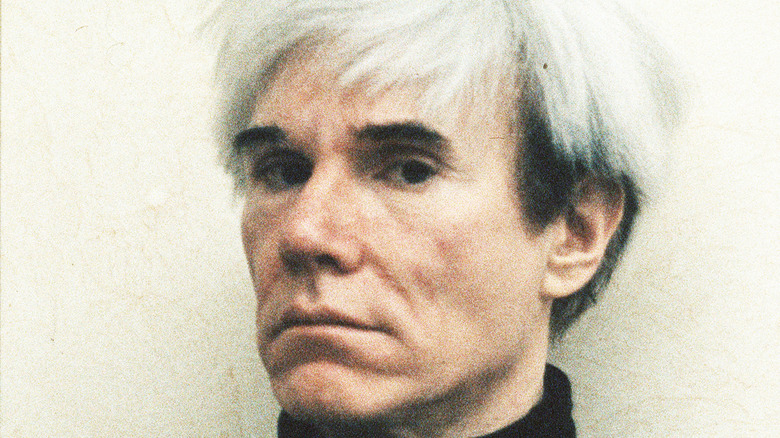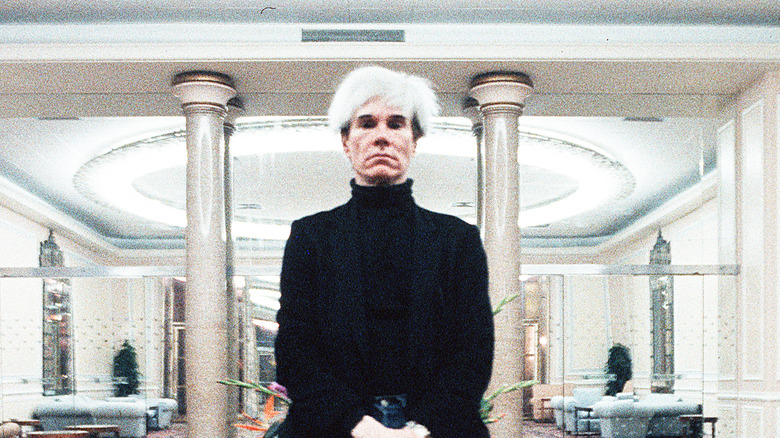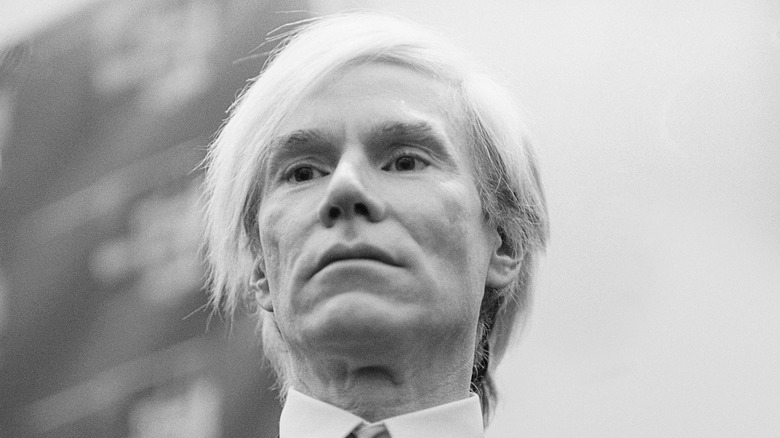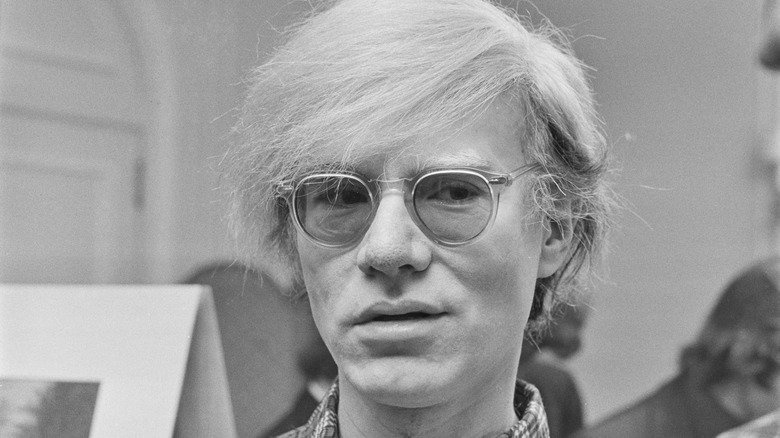The Wild True Story Of The Attempted Murder Of Andy Warhol
"In the future everybody will be world-famous for 15 minutes." So goes a quotation commonly misattributed to the pop artist Andy Warhol. Although Warhol likely never said it, per Smithsonian Magazine, the quote holds a certain truth in the case of his narrow brush with death at the hands of a previously unknown writer named Valerie Solanas.
According to Inside Edition Digital, Solanas had a "traumatic upbringing" that led to mental health issues. She was sexually assaulted by her father and physically abused by her grandfather. By age 15, she had left home, soon after having two children that she had to give up. Solanas came out as a lesbian during college and began work on a piece she called the "SCUM Manifesto." "SCUM" stood for "Society for Cutting Up Men," which related to Solanas' desire to eliminate the male gender from humanity.
The manifesto's opening lines said, "Life in this society being, at best, an utter bore and no aspect of society being at all relevant to women, there remains to civic-minded, responsible, thrill-seeking females only to overthrow the government, eliminate the money system, institute complete automation and destroy the male sex," per The New York Times. Shortly thereafter, Solanas would make good on her threat, starting with the pop artist Andy Warhol.
If you or someone you know may be the victim of child abuse, please contact the Childhelp National Child Abuse Hotline at 1-800-4-A-Child (1-800-422-4453) or contact their live chat services.
If you or anyone you know has been a victim of sexual assault, help is available. Visit the Rape, Abuse & Incest National Network website or contact RAINN's National Helpline at 1-800-656-HOPE (4673).
Valerie Solanas opened fire on Andy Warhol
Valerie Solanas moved to New York City in 1962 and from 1965 to 1967 became obsessed with revising her "SCUM Manifesto," per Inside Edition Digital. It was around this time that she met Andy Warhol and showed him a play she wrote called "Up Your A**," which he dismissed in part because it was too explicit, even for him. Still, he offered her bit parts in movies and even offered her a job as a typist at his iconic art studio, office, and event space, The Factory. She refused, and reportedly developed a theory that Warhol was setting out to steal her work.
On June 3, 1968, Solanas headed to 333 Union Square West in New York City to meet Warhol outside of his office, per The New York Times. Once Warhol arrived, he and Solanas rode up in the elevator together to the sixth floor, where a group of people were waiting in Warhol's office. "All of a sudden she pulls out a gun and starts shooting for no real reason," Blake Gopnik, who wrote the biography "Warhol," told Inside Edition Digital.
Solanas began firing a .32-caliber pistol and struck Warhol. The artist collapsed, banging his head on a nearby desk. Solanas went up to him and shot the gun into his side at close range. The bullet pierced several of Warhol's major organs. Solanas then ran from the office, riding the elevator back down to the New York streets.
Andy Warhol was pronounced dead due to organ damage
Twenty minutes after Valerie Solanas shot Andy Warhol, the artist was rushed to Columbus-Mother Cabrini Hospital, per Inside Edition Digital. The bullet had pierced his liver, lungs, spleen, and stomach, and he was pronounced clinically dead. Doctors operated on Warhol for five hours.
Meanwhile, Solanas turned herself in to the police and told one officer that Warhol "had too much control over [her] life." The next day, the New York Daily News published the news of the shooting with the headline, "Actress Shoots Warhol." Solanas set the record straight, commenting, "I'm a writer, not an actress," per Inside Edition Digital.
Warhol recovered in the hospital for two months. For the remaining 19 years of his life, he wore a surgical corset to support his abdomen. Still, the artist chose not to press charges against Solanas. He believed Solanas was "acting in her nature," according to what Breanne Fahs, who wrote the biography "Valerie Solanas: The Defiant Life of the Woman Who Wrote Scum (and Shot Andy Warhol)," told Inside Edition Digital. "Warhol, for all of his limitations, had this ability to take people for who they were and truly allow them to be extremely weird or eccentric or even violent," Fahs said.
What happened to Valerie Solanas?
Despite Andy Warhol's spirit of forgiveness, Valerie Solanas was "charged with attempted murder, assault and illegal possession of a gun," per Inside Edition Digital. She chose to represent herself. In the courtroom, Solanas declared that her attempt to murder Warhol was "a moral act," adding, "I consider it immoral that I missed. I should have done target practice." She was ultimately sentenced to three years in prison, with one year served, and declared "mentally unstable" and a "paranoid schizophrenic."
While the shooting itself may have been a "15 minutes of fame" scenario, its impacts gave Solanas a place in the history books. Months after it happened, Olympia Press — a publishing house best known for publishing the first edition of Vladimir Nabokov's controversial novel "Lolita" — finally published the "SCUM Manifesto." "The manifesto would not have been published," Breanne Fahs told Inside Edition Digital, "if it didn't have this sensationalistic story around it."
Solanas died in 1988 at the age of 52. According to The New York Times, she had been dead five days before her body was discovered in her San Francisco hotel room. Solanas' cause of death was pneumonia.



